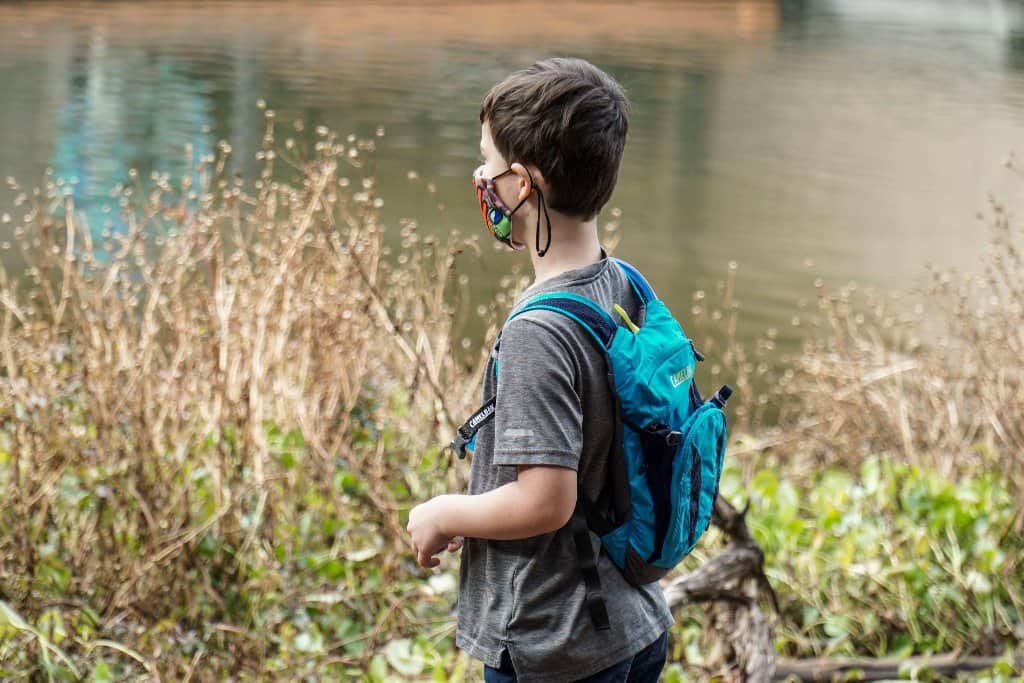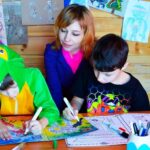Children benefit from being outdoors and learning with nature projects. Fresh air and movement have all been proven to reduce anxiety and promote leadership skills, problem-solving and imagination. Being in nature increases your child’s attention span and engages all the senses, which builds confidence, encourages creativity and boosts the immune system. Connecting formal (classroom) and informal (outdoor) learning creates a holistic educational experience. Basically, children need nature to be the best they can be and excel in all school subjects.
Busy parents often find it hard to come up with new and exciting projects to do outside that are designed to enrich their child’s education. Fortunately, there are wonderful resources to further your understanding of outdoor pedagogy. There are even classes that offer adults certification in a structured curriculum full of ideas for outside fun every day of the year. If you feel like you need more guidance, Best Ed Lessons is a great resource for learning at home.
Are you eager to start your outdoor learning adventures? Here are some easy projects that are nearly free and incorporate both the arts and sciences.
Easy Nature Collage
For this project, you will need:
- Heavy card stock paper
- Glue
- Items found in nature
Begin by sending your children out into nature on a scavenger hunt for anything that grabs their eyes: pine cones, sticks, nuts, seeds, flowers, grasses, leaves, rocks, and feathers. Anything they find will work perfectly. Then have them glue the items to the card stock paper to produce beautiful designs created with and inspired by nature.
This project has the ability to integrate math (symmetry, ratios, addition, subtraction, and geometry) with science and art. The benefits don’t stop there. It also improves gross motor skills, explores multi-sensory experiences, and promotes physical education all in one.
Rustic Fort Building
Rustic fort building is an excellent science, technology, engineering, art, and mathematics activity. For this project, you will need a wild forest space where kids can find sticks and branches large enough to make a small shelter they can fit into. Other things that can be found in nature and are helpful in building and problem-solving are vines, grasses, fronds, and moss; anything natural could work. Get creative!
Watching videos, reading books or looking at images of stick forts is a great source of inspiration before getting started. This project comes naturally to most children; however, there are some real challenges that arise as kids build. Figuring out the solution to these issues offers an opportunity for growth in areas of communication, imagination, leadership, engineering (math, art, and science), and problem-solving.
Storm Spotting
Another way to cultivate your child’s skill in both science and the arts is to get them interested in storm spotting. Tracking the weather through reports on the TV, the radio, or online, and connecting that with their personal observations every day, is a great introduction to meteorology. You can also encourage them to use their drawing skills to make their own weather maps.
Gauging the weather will also be useful in starting a family business that depends on the weather, such as a plant nursery. Horticulture is a great introductory topic to learning scientific discipline and the creative arts. Growing plants requires learning about various botanical principles such as light, water, and fertilization, while landscape design requires applying the knowledge of ideal growing conditions with creative design principles.
Nature has so much to offer your children, awakening not only their minds but also their hearts and hands. You can lean into the resources right outside of your back doors for educational inspiration. As parents, try to lead by example as you seek to better yourselves as lifelong learners—while bringing joy into your children’s educational play. Committing to your own personal growth through education empowers your kids to do the same.
– love learning -your best ed lessons guide, Scott




